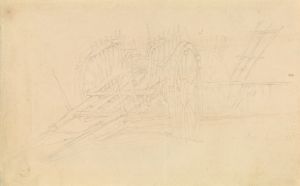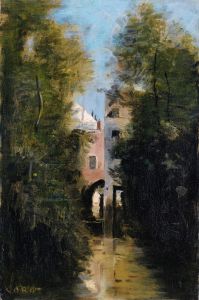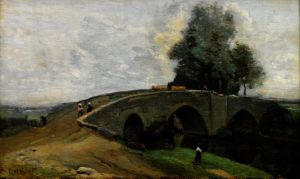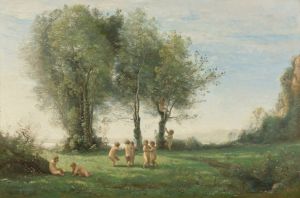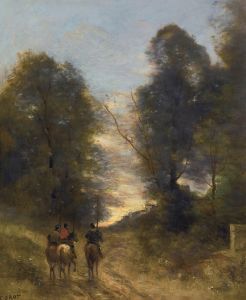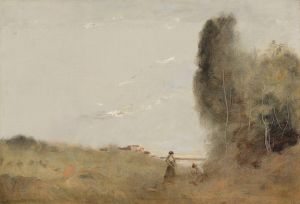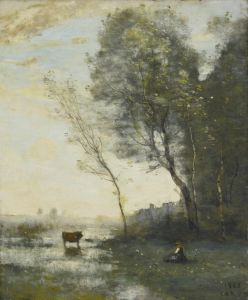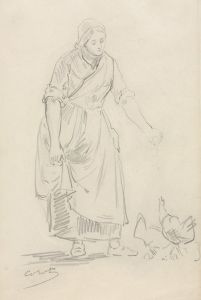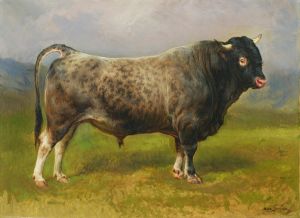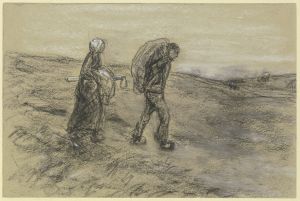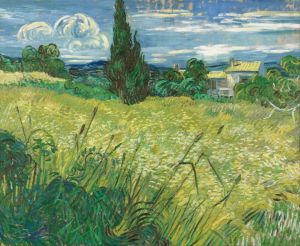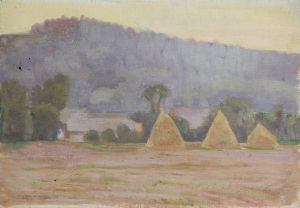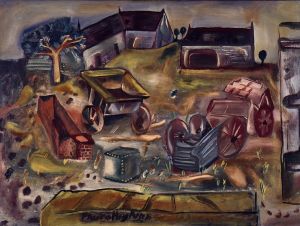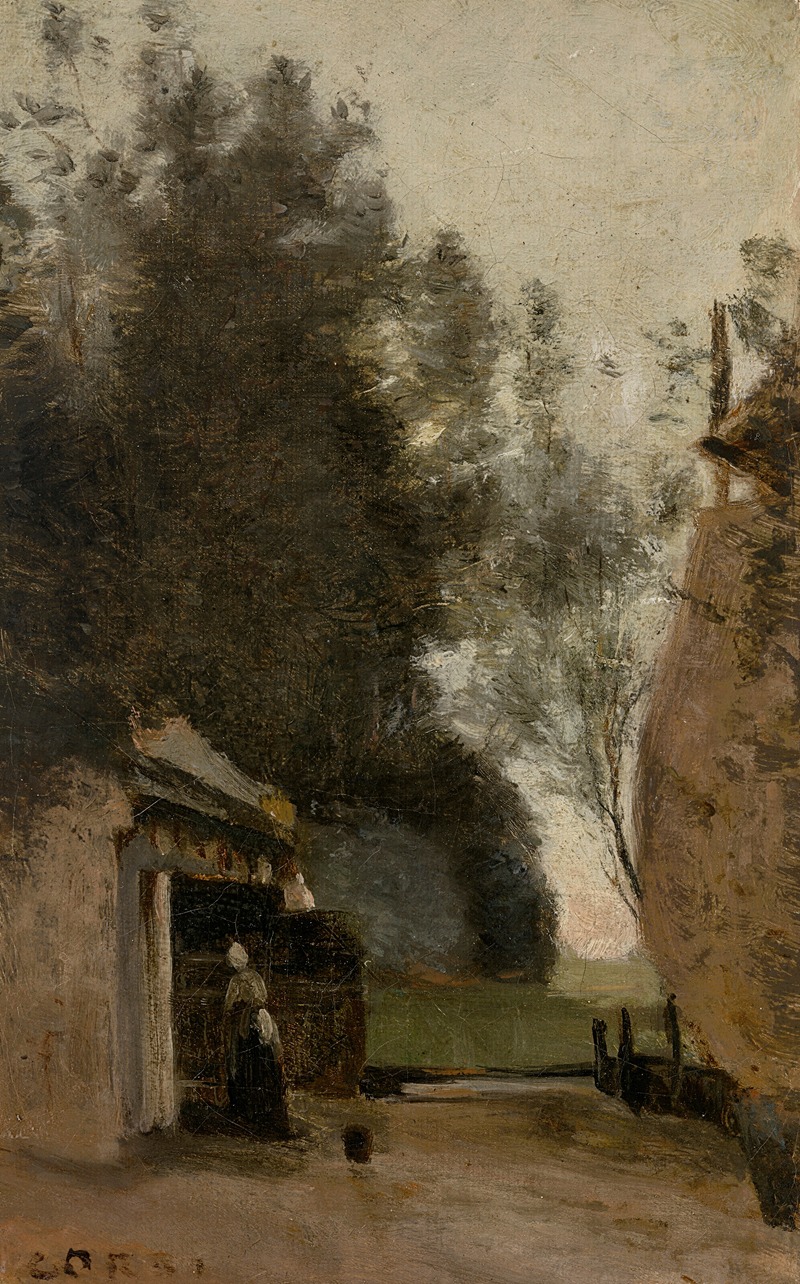
Environs d’Amsterdam, petite ferme des bords de l’Amstel
A hand-painted replica of Jean-Baptiste-Camille Corot’s masterpiece Environs d’Amsterdam, petite ferme des bords de l’Amstel, meticulously crafted by professional artists to capture the true essence of the original. Each piece is created with museum-quality canvas and rare mineral pigments, carefully painted by experienced artists with delicate brushstrokes and rich, layered colors to perfectly recreate the texture of the original artwork. Unlike machine-printed reproductions, this hand-painted version brings the painting to life, infused with the artist’s emotions and skill in every stroke. Whether for personal collection or home decoration, it instantly elevates the artistic atmosphere of any space.
Jean-Baptiste-Camille Corot, a pivotal figure in the landscape painting movement of the 19th century, created the artwork "Environs d’Amsterdam, petite ferme des bords de l’Amstel" during his extensive travels across Europe. Corot, born in Paris in 1796, was known for his ability to capture the essence of natural landscapes with a delicate balance of realism and poetic interpretation. His work laid the groundwork for the Impressionist movement, influencing many artists who followed.
"Environs d’Amsterdam, petite ferme des bords de l’Amstel" translates to "Surroundings of Amsterdam, small farm on the banks of the Amstel." This painting is a testament to Corot's travels in the Netherlands, where he was inspired by the serene and picturesque Dutch countryside. The painting depicts a tranquil rural scene, characteristic of Corot's style, which often focused on the interplay of light and shadow and the subtle nuances of the natural environment.
Corot's technique involved the use of soft, muted colors and a gentle brushstroke, which can be seen in this painting. The composition is likely to feature a small farmhouse situated near the Amstel River, surrounded by lush greenery and possibly reflecting the calm waters of the river. This setting not only highlights Corot's appreciation for the Dutch landscape but also his skill in rendering atmospheric effects, a hallmark of his work.
During his career, Corot was known for his plein air painting, a method that involved painting outdoors to capture the natural light and atmosphere of a scene. This approach allowed him to create works that were both realistic and imbued with a sense of tranquility and harmony. "Environs d’Amsterdam, petite ferme des bords de l’Amstel" likely exemplifies this technique, showcasing Corot's ability to convey the serene beauty of the countryside.
Corot's influence extended beyond his own work, as he played a crucial role in the transition from the classical landscape tradition to the more modern approaches seen in Impressionism. His emphasis on capturing the fleeting effects of light and his focus on the emotional resonance of a scene were elements that would later be embraced by Impressionist painters such as Claude Monet and Camille Pissarro.
While specific details about the provenance and current location of "Environs d’Amsterdam, petite ferme des bords de l’Amstel" may not be widely documented, the painting remains an important piece within Corot's oeuvre. It reflects his enduring fascination with the natural world and his ability to translate that fascination into art that continues to resonate with audiences today.
Corot's legacy is preserved through his numerous works housed in major museums around the world, and his influence is acknowledged in the evolution of landscape painting. "Environs d’Amsterdam, petite ferme des bords de l’Amstel" is a fine example of his contribution to art, capturing the serene beauty of the Dutch landscape with a masterful touch.





